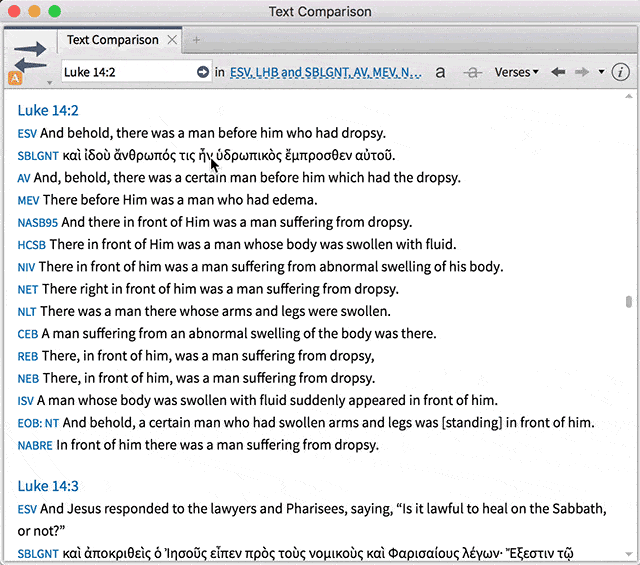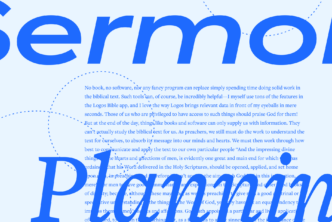Even professors who teach biblical languages typically teach just one of those languages. They must put forth some effort to maintain their skills in the language they don’t teach. Pastors, too, must take practical steps to retain their knowledge of and facility with Greek and Hebrew. One practical thing I have done for 15 years now is to keep my Greek and Hebrew Bibles (including the LXX) open every time I look at the Scripture text. Doing so has helped me keep my Greek and Hebrew from growing rusty.
There’s a simple way to make sure the original languages are always visible to you in your Bible study: creating a virtual Greek/Hebrew Bible in Logos. Let me show you how and why you should do it.
Why you should make a Hebrew-Greek Bible in Logos
Let’s start with the why. You should do this for at least one big reason: the recently revamped Text Comparison tool should be a standard tool in your study workflow, and it works best if you put your original language Bibles in a series.
I’ve got my Text Comparison window totally loaded up with English translations, but I want the original languages up at the top of the list. In order to avoid having to switch between prepared OT and NT layouts, I have one single layout that includes my special Hebrew-Greek Bible.
So when I call up a New Testament passage I get all the info I want, and when I call up an Old Testament passage I get all the info I want—without having to switch layouts because I asked the GNT to give me an Old Testament passage it naturally does not contain.
How to make a Hebrew-Greek Bible in Logos
The how may actually help you make sense of the why. You “stitch” resources (any resources) together in Logos by putting them in a “Series.” You can put any books you want into a series, and some are already in them, like commentary sets (New American Commentary, New International Commentary on the New Testament, etc.).
The way to put a Hebrew Bible and a Greek New Testament together is to open up your library, find each resource that you want to stitch together into your series, and open up its information. I suggest you put the Lexham Hebrew Bible and the SBLGNT together, and call the series “LHB and SBLGNT.”
You could also, of course, put together a Septuagint and a Greek New Testament. Call the series “Greek Bible,” perhaps.
Now the original languages will be right in front of you, no matter what passage you’re studying. You’ll still have to do the hard work of referring to them, but you’ve set up your study environment to promote one of your lifelong study goals.
Mark L. Ward, Jr. received his PhD from Bob Jones University in 2012; he now serves the church as a Logos Pro. He is the author of multiple high school Bible textbooks, including Biblical Worldview: Creation, Fall, Redemption.
Learn the Secrets of Mastering Logos
In our free 30-day course, we’ll walk you through essential skills that will maximize the power of Logos in your Bible study. Plus, you’ll learn a proven method for understanding the biblical writers’ original meaning—and how to bridge the gap from ancient context to everyday life. Put essential Bible study skills into practice as you work step-by-step through a guided study on the book of Jonah.








